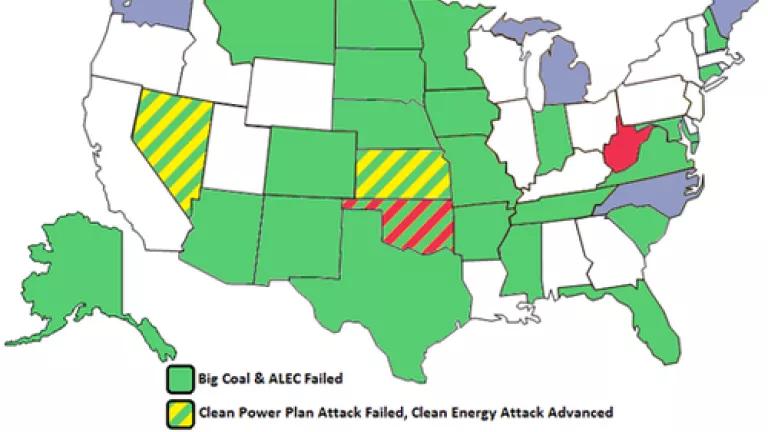
World leaders are gathering this week in Paris at the COP21 talks in an effort to hammer out a global agreement to combat climate change. But here in Ohio, a bill backed by the fossil fuel industry is preemptively trying to dismantle the work underway.
In the months since our nation committed to taking the first major steps to tackling carbon pollution with the Clean Power Plan, this critical show of leadership has changed the tone of the Paris talks. It has given world leaders the confidence that the U.S. is finally taking action, and motivating other key players (ahem, China) to follow suit.
But while these constructive negotiations swirl on the international stage, we're seeing a much different conversation taking place in Ohio and in other states. Elected officials in Columbus are taking a page from the American Legislative Exchange Council (ALEC) and fossil fuel industry playbook with legislation (HB 349) that would block their own state from designing a cost-effective plan to reduce carbon pollution under the Clean Power Plan.
Thankfully, these ALEC-inspired attempts have failed in at least 21 of the 22 states as detailed in this map.
Map: Aliya Haq / NRDC
Ohio HB 349 Could Undermine Effective Climate Action
In Ohio, unlike most states, we have a year-round legislature. Efforts to undermine climate action are continuous and still in play in the form of HB 349, which is being heard this week in the House Energy and Natural Resources Committee.
The bill appears innocuous at first, requiring Ohio EPA to submit a timely plan to meet the state's carbon emissions goals. But then it quickly devolves by dictating the agency secure express legislative approval before the state can submit its carbon emissions plan to U.S. EPA.
This new bureaucratic red tape would harm Ohio in two key ways.
First, it would seriously undermine state agency authority to develop cost-effective strategies to reduce carbon pollution. Ohio EPA has decades of experience developing air emissions regulations under the Clean Air Act. They should be afforded deference in developing a state plan in a way that works best for Ohio's policy goals and energy landscape.
Moreover, just like every other administrative regulation in the state, the eventual state plan is subject to review by the bipartisan Joint Committee on Agency Rule Review (JCARR) in the Ohio General Assembly before it is submitted. The agency is also embarking next year on an extensive public engagement process as it develops the plan and members of the public, utilities, clean energy companies, consumers, and environmental groups will have the opportunity to review and provide feedback.
HB 349 ignores this infrastructure that is already in place. State legislators who are ideologically opposed to addressing climate change, oppose federal environmental laws, or who do not otherwise wish to pursue clean energy policies, would be able to stop the agency in its tracks and prevent compliance with a critical law that will create jobs and protect public health.
Second, HB 349 would essentially hand the keys over to U.S. EPA to create a carbon emissions plan for Ohio instead of letting the state decide the best path for itself. Right now, Ohio has complete flexibility to cut emissions in a way that actually benefits the economy and bolsters the reliability of the power grid.
Requiring redundant (and likely disruptive) legislative approval of the state plan would give the legislature unprecedented power to sink an otherwise well-crafted strategy to cut emissions. The result? The federal government would have no choice but to step in and Ohio would lose the ability to determine its own fate.
Those pulling the strings on the kind of language that we now find in Ohio's HB 349--ALEC and special interests--are trying like mad to prevent clean, renewable energy sources like wind and solar from continuing to pick up steam. Their efforts are not about protecting consumers or the elderly, communities of color or even our future generations. And don't let them fool you into thinking they care about your electricity rates.
They are at the table purely to protect their own profits--on the backs of regular people in Ohio and elsewhere across the country.
Thankfully, clean energy and climate solutions are nevertheless prevailing with so many more who understand that climate change is real and we must do something about it. Ohio should be no different. The state has already committed to developing its own plan to cut emissions under the Clean Power Plan, and clean energy is rising to the top as a central tool to get there at low cost.
Let's build on this momentum and not let the interests of a few dictate the fate of the many by rejecting HB 349.
